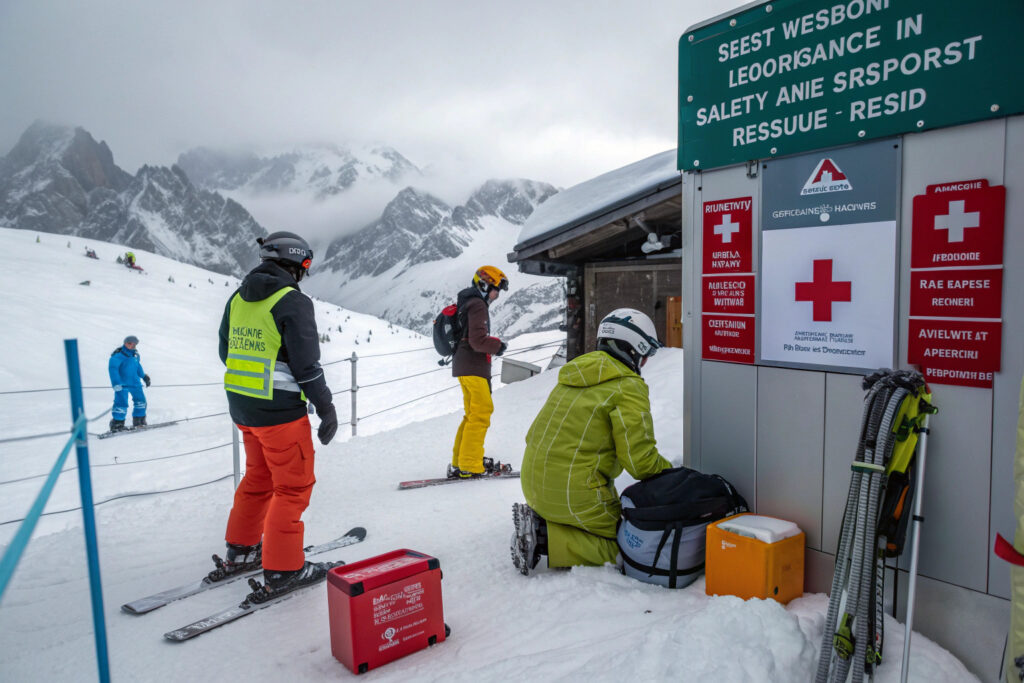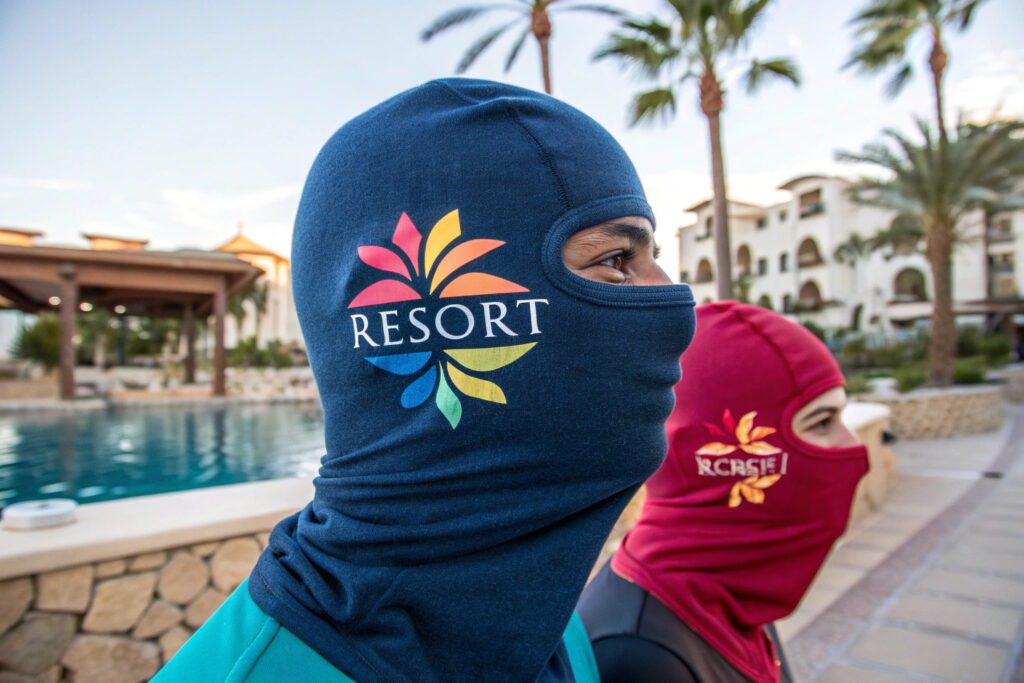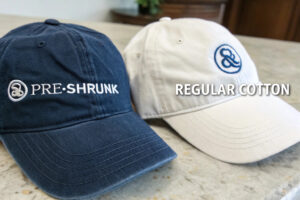Ski resorts face unique challenges when sourcing balaclavas that must perform under extreme conditions while representing their brand effectively. Standard off-the-shelf options often fail to meet the specific needs of mountain environments, leading to guest discomfort, frequent replacements, and missed revenue opportunities in rental and retail operations.
The most effective approach to sourcing custom balaclavas for ski resorts involves partnering with manufacturers specializing in technical winter sports apparel who understand fabric performance requirements, safety considerations, and the branding opportunities unique to mountain resorts.Successful sourcing requires balancing thermal performance, moisture management, safety features, and customization options that withstand harsh alpine conditions while maintaining brand visibility.
This comprehensive guide explores the technical specifications, manufacturing requirements, customization considerations, and supply chain strategies that ensure ski resorts source balaclavas that enhance guest experiences while meeting operational demands.
What technical specifications matter for ski resort balaclavas?
Ski resort balaclavas must perform under conditions that test the limits of outdoor apparel. Understanding the technical requirements ensures the products withstand mountain environments while providing essential comfort and protection.
Critical technical specifications include thermal insulation properties, moisture-wicking capabilities, breathability metrics, wind resistance, and safety considerations that address the unique challenges of alpine sports and changing mountain conditions.

Why is moisture management crucial for ski balaclavas?
Moisture management becomes critical in ski environments because perspiration accumulation can lead to rapid heat loss and discomfort. Balaclavas require fabrics with high moisture vapor transmission rates that move sweat away from the skin while maintaining thermal insulation when damp. Materials like merino wool blends and technical synthetics with hydrophilic properties prevent the clammy feeling that drives guests to remove protection in cold conditions. For resorts, this translates to longer wearing times and better guest compliance with safety recommendations. The best balaclavas maintain their wicking properties through multiple rental cycles or repeated personal use, ensuring consistent performance throughout the season.
How do thermal properties vary for different resort conditions?
Thermal requirements differ significantly based on resort elevation, typical temperatures, and guest activity levels. Balaclavas for high-altitude resorts with consistently cold conditions need heavier insulation (often 200-300g/sm), while lower elevation resorts with variable conditions benefit from versatile mid-weight options (150-200g/sm). The most effective approach involves offering multiple weights or creating hybrid designs with varying thickness in different zones—thicker coverage for cheeks and neck, lighter construction around the mouth for easier breathing. Understanding your resort's specific climate patterns and typical guest activities (leisure skiing vs intense snowboarding) ensures appropriate thermal specification matching actual usage conditions.
Which materials perform best in mountain environments?
Material selection directly impacts balaclava performance, durability, and guest satisfaction. The right materials withstand extreme conditions while maintaining comfort through long days on the mountain.
The most effective materials for ski resort balaclavas include technical synthetic blends, merino wool hybrids, wind-resistant exterior layers, and strategic material combinations that address different facial zone requirements.

Why are merino wool blends ideal for resort balaclavas?
Merino wool blends offer natural temperature regulation, odor resistance, and moisture-wicking properties that make them exceptionally suitable for ski resort use. The natural crimp of merino fibers creates tiny air pockets that provide insulation even when damp, while the lanolin content offers inherent water resistance. Blending merino with 15-30% synthetic fibers like polyester or nylon enhances durability for rental programs and maintains shape through repeated washing. For resorts, this translates to balaclavas that remain fresh through multiple users while providing the comfort that encourages all-day wear. The natural UV protection of wool provides additional value in high-altitude environments with intensified sun exposure.
How do wind-resistant materials enhance mountain performance?
Wind-resistant materials prevent heat stripping in exposed mountain areas where wind chill significantly impacts comfort. Strategic placement of windproof panels across the forehead, cheeks, and front neck area blocks convective heat loss without compromising overall breathability. Materials with tight weave densities (often 20-30CFM air permeability) or laminated membranes in critical zones protect against wind penetration while allowing moisture vapor escape. For resorts with exposed chairlifts or high-speed gondolas, these wind-resistant elements differentiate adequate balaclavas from exceptional ones that guests appreciate during their entire mountain experience.
What safety features should resort balaclavas include?
Safety considerations extend beyond warmth to address visibility, helmet compatibility, and emergency scenarios unique to mountain environments. Proper safety features protect both guests and resort liability.
Essential safety features include appropriate face coverage options, helmet integration systems, visibility elements, and emergency preparedness considerations that address realistic mountain scenarios.

Why is helmet compatibility non-negotiable for resort balaclavas?
Helmet compatibility ensures balaclavas integrate seamlessly with ski and snowboard helmets without compromising safety systems. Designs must accommodate helmet retention systems without creating pressure points, allow proper chin strap positioning, and maintain ear coverage without interfering with audio systems. The best resort balaclavas feature flatlock seams in helmet contact areas, minimal bulk around the crown, and strategic thin zones that prevent helmet lift. For rental programs, this compatibility is crucial—ill-fitting combinations lead to guests removing either helmets or balaclavas, compromising safety or comfort. Testing samples with your resort's specific helmet models prevents compatibility issues at scale.
How can visibility features enhance mountain safety?
Visibility features address the real risks of whiteout conditions, flat light, and low visibility that mountain environments frequently present. Strategic reflective elements positioned on shoulders (visible to chairlift operators) and on the back head area (visible to following skiers) enhance detection without compromising style. For night skiing operations, these elements become essential safety components. Additionally, bright color options in rental fleets improve group visibility for ski school programs and help mountain safety personnel quickly identify guests in need of assistance. These considerations demonstrate comprehensive safety planning that extends beyond basic warmth provision.
What customization options work best for resort branding?
Customization transforms functional balaclavas into brand ambassadors that generate revenue and reinforce resort identity. Strategic branding approaches maximize visibility while maintaining performance.
Effective customization includes strategic logo placement, colorway selection that reflects resort identity, value-added features that justify premium pricing, and program-specific variations that target different resort segments.

Where should resort logos be positioned for maximum impact?
Resort logo placement requires balancing visibility with practical considerations of winter sports. The most effective positioning includes the forehead area (visible in lift lines and on chairlifts), the left chest area (visible during rental fittings and in lodge areas), and the back neck area (visible when guests are looking uphill). Avoid placing logos directly over the mouth area where condensation and ice buildup can obscure branding. For maximum impact, use embroidery techniques with frost-resistant threads that maintain clarity in cold conditions, or consider silicone printed logos that provide texture without compromising breathability in critical zones.
How can program-specific variations increase sales?
Program-specific balaclava variations target different resort segments with tailored features. Ski school versions might incorporate bright safety colors and instructor contact information pockets, while premium rental options could feature upgraded materials and resort map graphics. Limited edition designs for special events create collectibility, and youth sizes with character elements increase family sales. This segmented approach allows resorts to serve different price points and usage scenarios while maximizing overall balaclava revenue. The most successful resorts create coordinated collections that work together visually while serving distinct operational purposes.
Conclusion
Sourcing custom balaclavas for ski resorts requires understanding both technical performance requirements and resort operational realities. The most successful sourcing partnerships deliver products that withstand extreme mountain conditions while enhancing guest experiences and supporting resort branding objectives across rental, retail, and operational contexts.
At Global-Caps, we specialize in technical winter sports headwear with specific expertise in balaclava manufacturing for mountain resorts. Our fabric selection, safety feature integration, and customization capabilities ensure your resort receives balaclavas that perform reliably while representing your brand effectively. If you're looking for a manufacturing partner who understands the unique demands of ski resort operations, contact our Business Director Elaine at elaine@fumaoclothing.com. Let us help you create balaclavas that become an essential part of your guests' mountain experience while driving revenue and brand loyalty.







